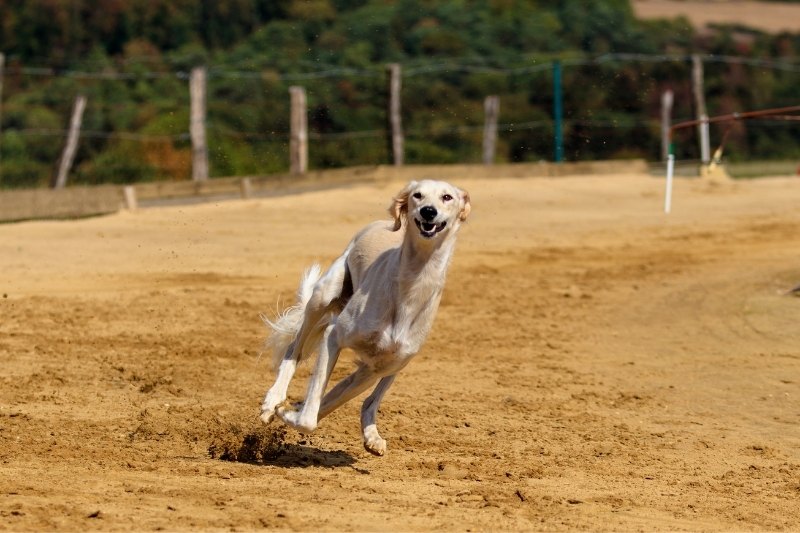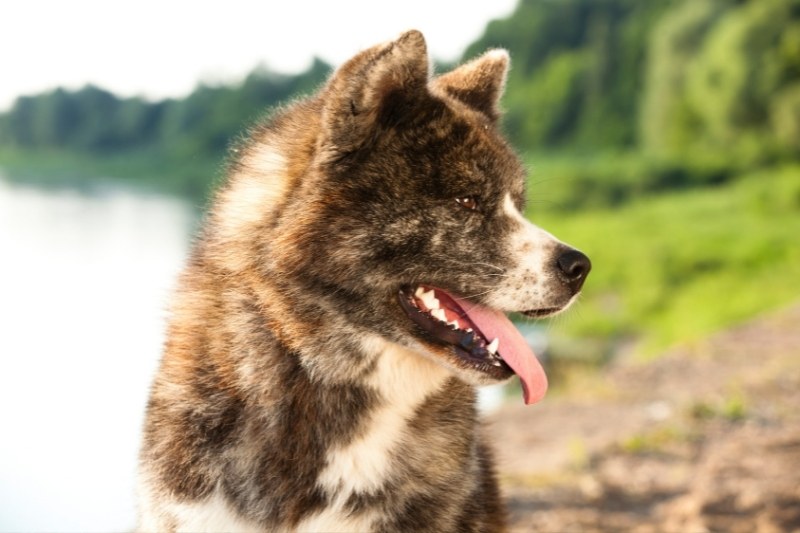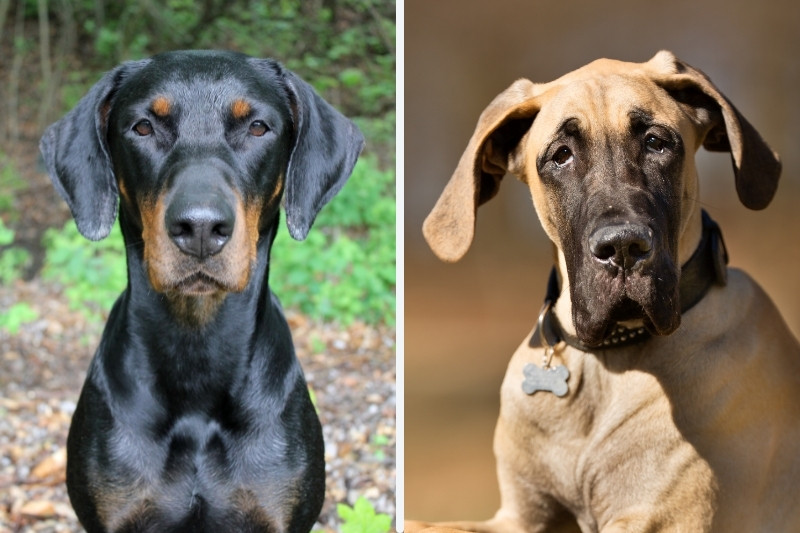Do Border Collies shed?

Border collies are the geniuses of the dog world, and they can be charming pets. However, border collie shedding can be an issue for some dog owners. Here's what you need to know about the Border Collie’s coat, how much they shed, and what you can do to control and deal with shedding.
How Much Do Border Collies Shed?
Border Collies shed a fair amount, especially during shedding season when the coat falls out and is replaced. While these dogs don't shed as much as some breeds, you will definitely notice a fair amount of loose hair from your border collie.
Depending on your dog's coloration and coat type, you may notice more or less shedding. The classic black-and-white coloration tends to be the most noticeable, since no matter what kind of furniture or color rugs you have, one or the other of the black and white coat hairs is likely to be evident.
Border Collie Coat Types
Border collies come in different colors and in two kinds of coat: rough coat and smooth coat. Both types are thick double coats that are dense and weather-resistant. The coat is made up of a soft undercoat and a tough outer coat.
The undercoat is designed to keep these herding dogs warm even in frigid temperatures, while the outer coat is developed to protect your dog from weather. Both the smooth coat and the rough coat shed about the same amount, but you'll probably notice shedding more with the medium-length hair of the rough coat since there is more hair overall.
Rough-coated border collies are much more common, and you may not even recognize the smooth-coated variety as a border collie.
Border collies were originally bred to be herding dogs. More Border Collies are still bred to do this original job than many other breeds. For this reason, there may be more diversity in how much a border collie sheds than you would find in a breed that is more tightly controlled for looks instead of function.
If you have chosen your border collie from a line bred to be herding dogs rather than family pets, you may find that they shed more or less than you expect. Breeders may develop dogs that are better acclimated to the climate they’re in. Border collies bred to herd in cool climates may grow a thicker winter coat, whereas those bred for warmer climates may have a thinner coat.
When you are picking out your dog, talk to the breeder about border collie shedding and whether their dogs are bred to have a thicker coat and shed more or thinner, lower-shed coats.
How to Reduce Shedding?
Border Collie Grooming Routine
Appropriate grooming can go a long way to reduce shedding from your Border Collie’s coat. Going over your dog's coat with a pin brush a couple of times a week is typically sufficient as regular grooming when your dog isn't shedding excessively.
However, daily brushing is a good idea to manage shedding during shedding season. You may find that using a slicker brush or undercoat rake does a better job of removing excess hair from this dog's thick coat when shedding is at its peak. Grooming sessions don't have to be long; typically 10 or 15 minutes of brushing is sufficient.
A Healthy Diet
If you want your border collie to shed as little as possible, it's important to maintain a healthy coat. Make sure that your border collie has a diet with healthy oils and fats to help replenish and maintain the natural oils in the coat. Such a diet may make it less likely that your dog will shed excessively.
A healthy diet with healthy fats and oils as well as plenty of high-quality proteins will help to maintain your dog's coat.
Use Flea Control
All dogs can be prone to parasites like fleas, but a working dog that spends a lot of time outdoors, such as the Border Collie, may be even more likely to get parasites. Therefore, it's extremely important to use flea control to not only manage shedding but to prevent discomfort and maintain a healthy coat.
If your dog gets fleas, you'll notice excessive itching and likely an increase in shedding as well. If fleas are not controlled promptly, itching and shedding can even lead to bald patches.
Note: Make sure not to use Ivermectin, as Collies may have a genetic mutation and this medication could be fatal to them.
Protect Sensitive Skin
In general, double-coated breeds like the Border Collie are not typically very prone to having delicate skin, but it definitely does happen. You may realize that your border collie’s skin is sensitive because they will be itchy or have more shedding after you use products during a bath or grooming session.
You may also notice that your dog itches more or seems more bothered by their coat in hot weather. Hair loss in hot weather or following grooming may occur.
Your veterinarian can help you to diagnose whether your dog has sensitive skin. If you do find that your dog sheds due to their sensitive skin, using products designed for this kind of skin can be beneficial.
Treat Allergies
Border collies generally are not one of the breeds most likely to have allergies, but some border collies do suffer from allergies. Excessive shedding can be a sign of an allergic reaction.
Environmental allergies to things like pollen, grass, and seasonal elements in the environment may be especially likely to cause shedding. Border Collies that are suffering from allergies may be itchy and have other symptoms like sneezing. Your veterinarian can prescribe an antihistamine or other medication to treat your Border Collie’s allergies and reduce shedding.
Can Shaving Your Dog Reduce Shed Hair?
While shaving your border collie may reduce the amount of dog hair you find in your house, it is not recommended. Dog owners may want to shave their border collie to reduce all the loose hair, but in fact, shaving your border collie will affect the way that the top coat and bottom coat interact.
Your dog may tend to have a higher body temperature in the heat, and this is true of all double-coated dog breeds like the border collie. Regular brushing with appropriate grooming tools is a much better option than shaving your dog's hair.
What to do About Loose Fur if your Border Collie Sheds Excessively?
If you happen to have a collie that is very prone to shedding, you may find yourself struggling to handle all of the fur that you find shed from your border collie’s coat. Excessive shedding can be a frustrating problem for owners of this herding dog. Here are a few tips to help you manage the loose fur around your house:
- Brush your dog outside regularly. Frequent brushing is the best way to get excess hair out of your border collie’s thick coat, but unless you want that hair to end up in your house, doing it outside is a good idea. The fluffy undercoat has a tendency to blow around while you're brushing, so the best way to make sure it doesn't end up as dust bunnies under the couch is to brush outside.
- Let your dog play outside until they are fully dry after a bath. It may feel pretty unintuitive to allow your dog to run around in the grass right after they've had a bath, but shedding is often the most intense right after bathing until your dog is fully dry, so it's a good idea to keep them outside at this time.
- Consider a robot vacuum. If you find that chasing after the loose hair in your house is driving you crazy, a robot vacuum isn't a bad idea. Robot vacuums continuously pick up hair on the floor before it can end up on your furniture.
- Use furniture covers. If your border collie spends time on your couch or bed, you may want to use a furniture cover that is easy to wash in the machine so that you aren't struggling to get the shed hair off of your upholstery.
Do Border Collies Shed?
Border collie shedding can be an issue for pet parents, but by taking care of your border collie’s coat properly, being proactive about controlling shed hair, and keeping up with your border collie’s grooming needs, you can make sure that border collie shedding doesn't end up being an issue for you.

My experience as the liaison of integrative medicine, neurology, and zoo medicine at UF Small Animal Hospital gave me valuable insight into the challenges faced by pet owners with animals who have medical conditions. My time there also gave me the opportunity to care for a disabled dog and write a book about the experience.
As manager of a dog daycare, I learned about how dogs play and interact, warning signs for aggression, and how to rehabilitate dog-reactive dogs. During my time there I was under the mentorship of two groomers, from whom I learned grooming essentials.
I currently work with high-risk shelter dogs and manage a blog to help other volunteers and foster families. I have two dogs of my own, a Maltese and a Standard Poodle.









